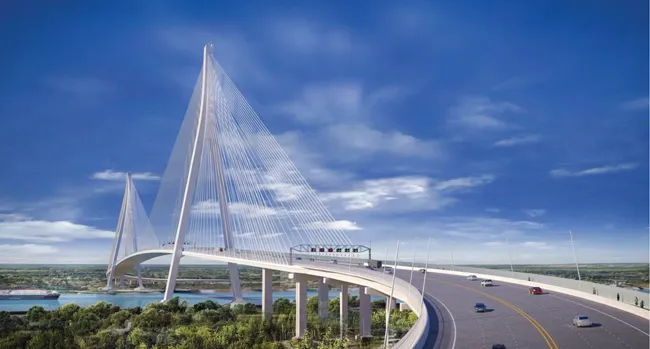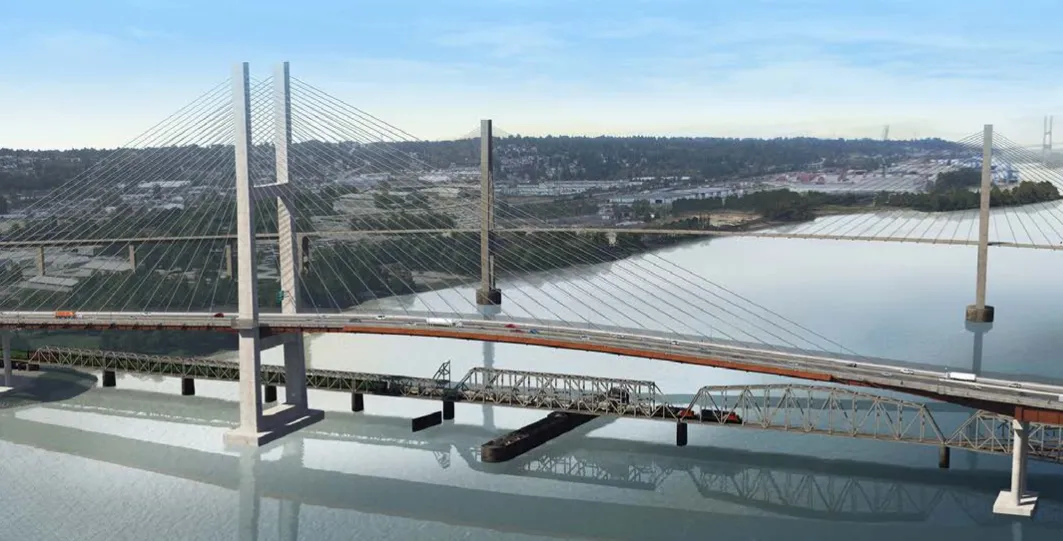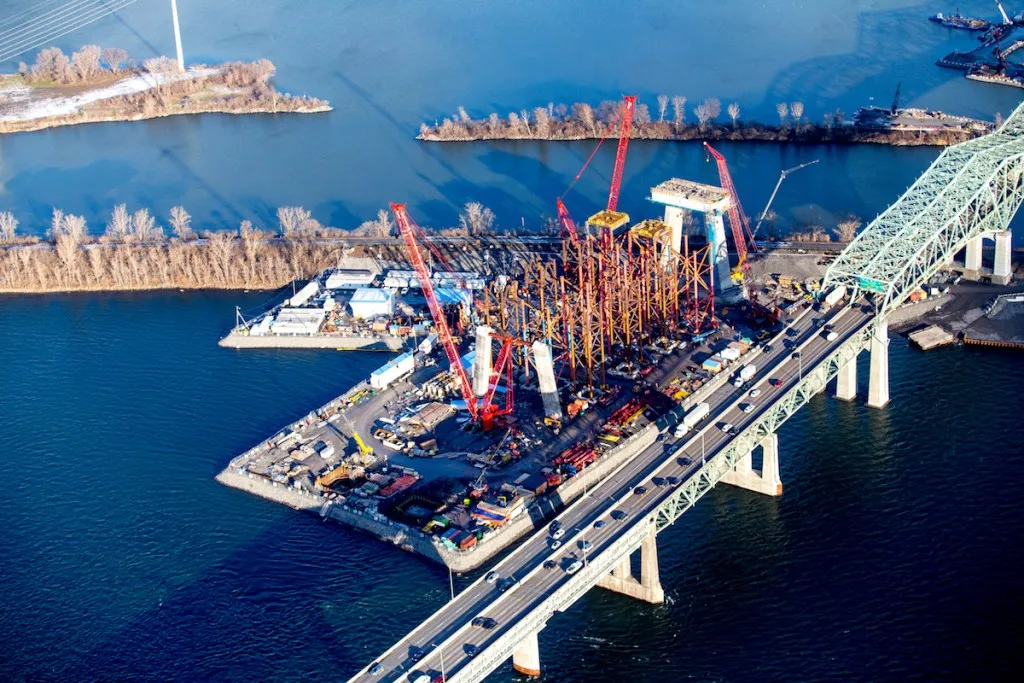
A partnership including
The bridge is named after the Canadian ice hockey player Gordie Howe who was with the Detroit team Red Wings in North America’s National Hockey League for many years, leading them to several victories.
The six-lane bridge will also have dedicated pedestrian and cycling lanes. It will connect the two cities by linking Interstate 75 and Interstate 96 in
Michigan with the new extension of Highway 401 – also called the Herb Gray Parkway - in Ontario. Gray was a Windsor-born federal Canadian politician and deputy prime minister.
According to the WDBA, the bridge’s A-shaped towers will rival the height of Detroit’s 73-storey Renaissance Center.
The Canadian customs plaza will be the largest Canadian port of entry on the US-Canada border. The bridge will also be the longest cable-stayed bridge in North America, according to the companies.
Work will include building ports of entry on the US and Canadian sides of the river as well as improvements to existing infrastructure. Fluor and ACS will operate and maintain the facility for 30 years to standards set by WDBA under a public-private partnership (see box).
Terence Easton, president of Fluor’s infrastructure business, called the appointment a “once-in-a-generation project” and said financial close will likely be later this year.
The new bridge will be the second Windsor-Detroit crossing, joining the Ambassador Bridge, a suspension toll bridge owned by the US-based Moroun family. The 2.3km Ambassador, opened in 1929, is operated through the Detroit International Bridge Company in the US and the Canadian Transit Company in Canada.
The ageing Ambassador carries the vast majority of all vehicle freight between the two countries. But residents, businesses and local authorities struggle with long lines of backed up vehicles due to limited capacity on the four-lane bridge.
The new bridge will be a completely Canadian-owned and operated structure. Michigan state was unsuccessful in lobbying by US state authorities for funding for what would have been a joint project. Canada decided to go ahead under a P3 deal, despite continuing objections from the Moroun family.
The new bridge, being Canadian, will not cost the US taxpayers anything. However, the Moroun family has sued the governments of Canada and Michigan state to stop construction of the Gordie Howe crossing and released a proposal to build their own second bridge, although few details have been released.
Fully behind the Gordie Howe Bridge is Michigan governor Rick Snyder who said, on the day of the WDA announcing the contractor, it will be “a towering symbol of the peace and prosperity shared by Michigan and Canada, our most vital trading partner”. It will also “create thousands of jobs in Michigan. It greatly enhances our supply chain and will create economic opportunities and growth in ways many people have not yet fully realised”.
The Canadian government estimates that toll revenue will be around $23 billion over the 30-year contract. Nonetheless, cost concerns for the new bridge are rising, as is the price tag.
Initial cost for the entire project was around US$1.5 billion but is now upwards of $3.7 billion. This has raised budget concerns in the past two years, with the latest in April, according to a report by the Canadian Broadcasting Corporation. The federal government ordered a review of the budget for a new cross-border bridge in Windsor, Ont., after concerns arose that the cost was in danger of exceeding spending targets, newly released documents show.
The Windsor-Detroit Bridge Authority is a not-for-profit Canadian government corporation created to manage the procurement process for the design, build, finance, operation and maintenance of the bridge through a public-private partnership (P3). WDBA is also responsible for project oversight.
Who’s who
Fluor Canada and ACS Infrastructure Canada led the development phase of the project and will hold the prime contract.
Other firms in Bridging North America include
Canadian construction firm Aecon was part of the group until it withdrew in May, reportedly because it was a potential takeover target by a Chinese state-owned company. The deal, however, was later blocked by the Canadian government.
This is the second project in the Windsor-Detroit area in which Fluor and ACS have partnered. They recently delivered, and are operating and maintaining the Herb Gray Parkway that will connect directly to the new bridge.







